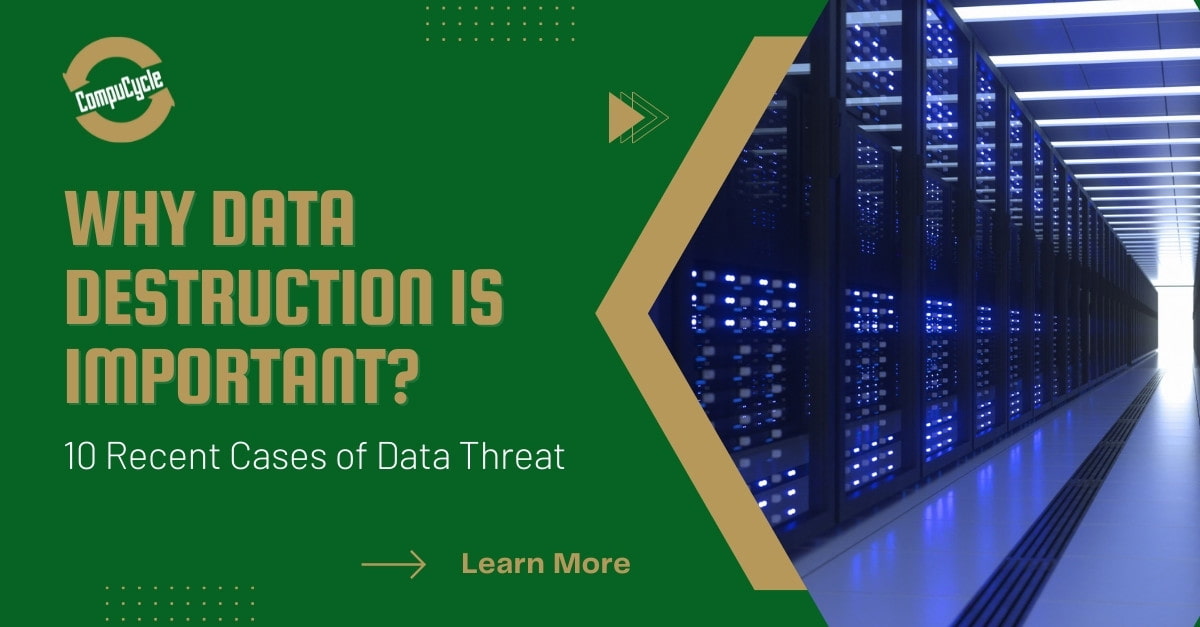Checking Out the Significance of Information Damage in the Context of Computer System Protection Solutions and Protecting Confidential Data
In an age where information violations are increasingly usual, the importance of efficient data damage can not be overemphasized. Organizations needs to adopt strict procedures to guarantee that delicate information is not only protected during its lifecycle yet additionally decisively removed when no more needed. The methods used for information obliteration, coupled with conformity to lawful standards, play a crucial role in preserving discretion and trust. The ramifications of these practices prolong past simple compliance, affecting a company's online reputation and operational integrity in the electronic industry. What approaches can organizations execute to improve their data devastation procedures?
Recognizing Information Destruction
Information damage is an essential component of computer system safety that entails the long-term removal of information from storage devices to avoid unauthorized access and possible information breaches. In an increasingly digital landscape, companies encounter enhanced dangers connected with delicate details being poorly accessed or exploited. Efficient information damage safeguards against these hazards, making sure that confidential dataâEUR" such as client details, intellectual residential property, and economic recordsâEUR" can not be recovered after disposal.
Comprehending the relevance of data damage extends beyond plain compliance with regulative and legal frameworks; it is essential for preserving business honesty and trust. When data is poorly managed or improperly damaged, the consequences can be severe, consisting of economic loss, reputational damages, and legal responsibilities.

Techniques of Data Eradication

One widespread approach is data cleaning, which entails overwriting existing data with random patterns multiple times. This technique renders the initial information irretrievable, making it a popular option for organizations looking for to secure personal details.
Another method is degaussing, which uses a powerful electromagnetic field to interrupt the magnetic domain names on storage space gadgets, properly eliminating the information. This technique is especially efficient for magnetic media but is not appropriate to solid-state drives.
Physical devastation is one more robust method, entailing the shredding or crushing of storage tools. This method warranties that data recuperation is virtually difficult, making it optimal for very delicate details.
Last but not least, security can offer as a complementary strategy to information removal. By encrypting data before removal, companies can include an extra layer of security, making certain that also if remnants are recovered, they remain hard to reach without the decryption key. Each technique needs to be picked based on the level of data level of sensitivity and the certain safety requirements of the company.
Legal Compliance and Information Security
Organizations should browse a complicated landscape of legal demands connected to data security, particularly after applying approaches of data removal. Various laws, such as the General Data Security Policy (GDPR) and the Medical Insurance Portability and Accountability Act (HIPAA), enforce stringent guidelines on just how companies must handle and get rid of of delicate information. Failing to abide by these policies can bring about significant legal repercussions, including significant penalties and reputational damage.
Information damage procedures should be carefully recorded to demonstrate conformity with relevant laws and requirements. This documents not only offers as proof of adherence to legal responsibilities but likewise highlights a commitment to protecting sensitive info. Organizations should also establish clear best site policies pertaining to data retention and damage timelines, making sure that data is not held longer than required.

Additionally, normal audits and assessments of data destruction practices are necessary to keep conformity and adapt to advancing legal structures (data destruction). By proactively attending to legal demands, organizations can mitigate risks associated with information violations and show their commitment to data safety. Inevitably, prioritizing lawful compliance in data damage procedures is not simply a regulatory responsibility, but an essential aspect of a durable data safety method
Influence On Service Reputation
The online reputation of a company can be dramatically impacted by its method to data damage and administration. In today's electronic landscape, where information breaches can take place see page anytime, the failure to properly dispose of sensitive info can cause severe effects. Organizations that improperly take care of information damage threat revealing personal consumer information, which not only goes against personal privacy legislations yet additionally erodes trust fund amongst customers and stakeholders.
A tarnished track record can cause lowered client commitment, as clients become reluctant to engage with a service that has demonstrated neglect in shielding their data. Adverse publicity surrounding a data violation can have an enduring result, as potential clients may be discouraged by the viewed lack of protection. This can cause a direct decrease in income and market share.
Additionally, organizations that prioritize information destruction as component of their protection strategy can improve their track record by showcasing their dedication to guarding sensitive information. By taking on stringent data management methods, companies can not only alleviate threats yet additionally place themselves as reliable entities in their corresponding markets, therefore enhancing their overall brand picture.

Ideal Practices for Secure Disposal
Implementing best techniques for safe and secure disposal of data is crucial for reducing dangers related to data violations and guaranteeing conformity with privacy guidelines. Organizations needs to adopt a thorough data disposal plan that outlines procedures for both physical and electronic data devastation.
For physical data storage tools, such as hard disk drives, shredding or degaussing is recommended to stop top article data recuperation. Furthermore, companies ought to preserve a chain of protection paperwork throughout the disposal procedure, ensuring responsibility and traceability of disposed products.
For digital information, using software program that sticks to market criteria for information wiping is critical. This software application needs to overwrite existing data several times, making healing practically impossible. It is also important to validate the performance of the information devastation procedure with audits or third-party analyses.
Training staff members on safe and secure disposal techniques adds one more layer of security, as human mistake can typically bring about information direct exposure. Frequently upgrading and examining disposal plans makes certain alignment with progressing laws and technological improvements. By implementing these finest methods, companies can dramatically minimize the risk of unapproved information accessibility and improve their overall information protection technique.
Final Thought
To conclude, information destruction is an essential element of computer system safety and security services that ensures the security of private info from unapproved gain access to. Executing efficient techniques of data eradication, sticking to legal conformity, and identifying the impact on service credibility are necessary elements of an extensive data security approach. By taking on ideal practices for safe and secure disposal, organizations can cultivate trust fund with clients and protect delicate data, eventually contributing to a more protected digital landscape.
In an era where data breaches are increasingly typical, the significance of efficient data destruction can not be overemphasized.Information destruction is a critical element of computer security that involves the irreversible elimination of information from storage gadgets to stop unapproved accessibility and potential data breaches. Organizations ought to additionally establish clear plans concerning information retention and destruction timelines, ensuring that data is not held longer than necessary.
By proactively resolving lawful demands, organizations can reduce risks associated with information violations and show their commitment to data security (data destruction). Ultimately, prioritizing legal compliance in information destruction procedures is not simply a regulative obligation, yet a basic element of a robust data protection technique